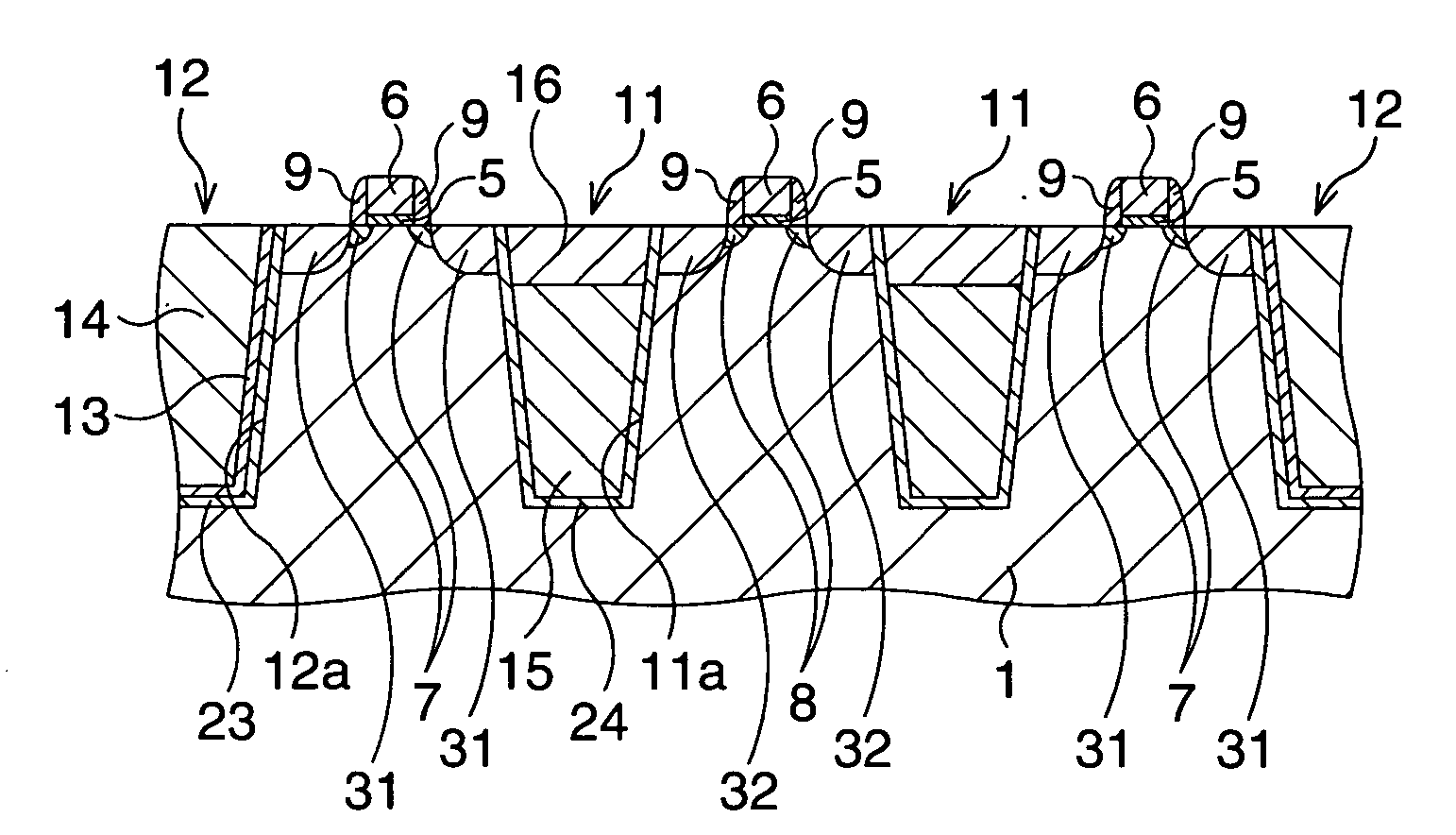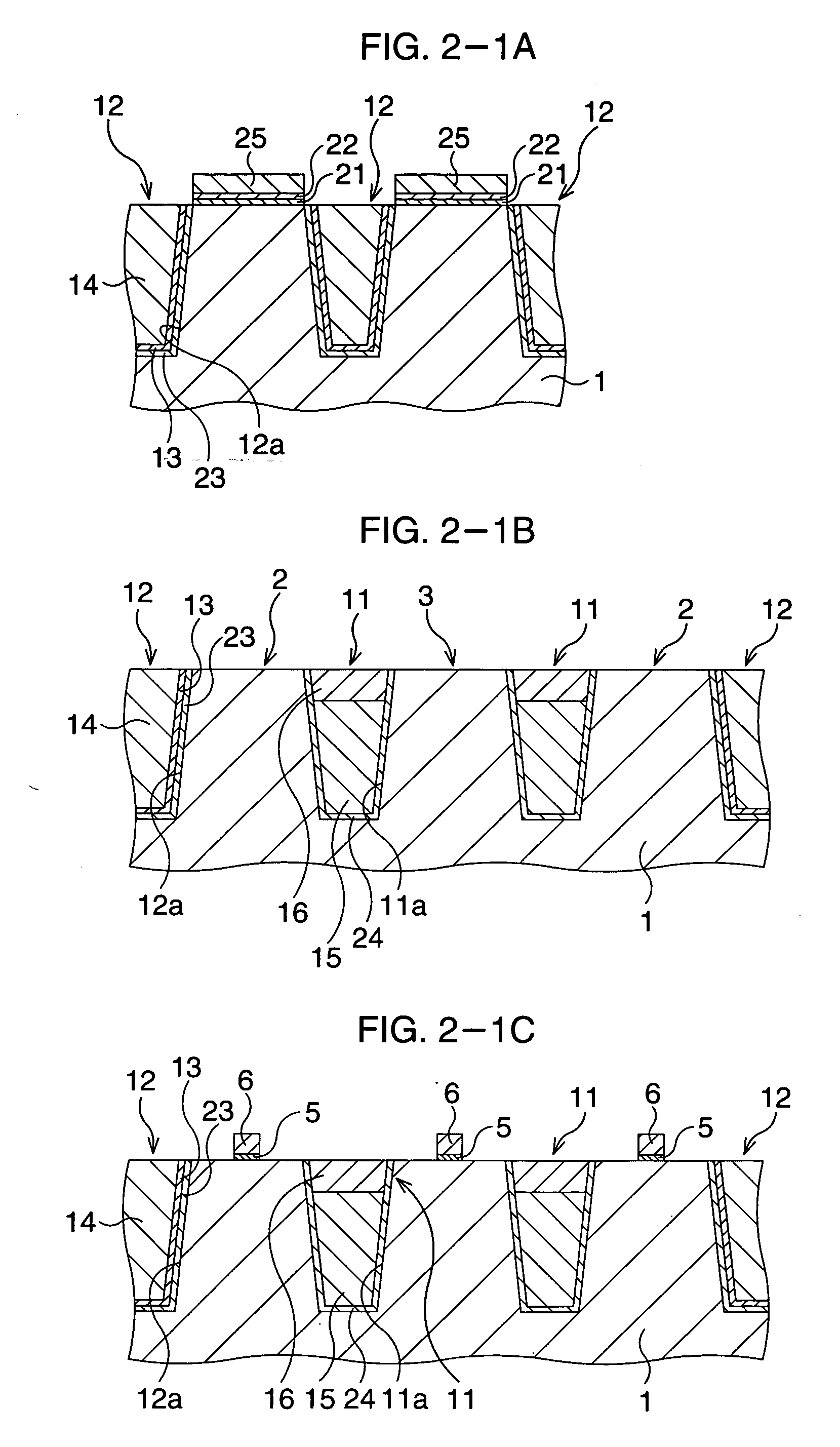Semiconductor device and manufacturing method thereof
a semiconductor and manufacturing method technology, applied in semiconductor devices, measurement devices, instruments, etc., can solve the problems of difficult to improve the operation current of n-type and p-type mos transistors, the control of compressive stresses, and the leakage of pn-junction, so as to improve the operation current and the effect of improving the operation curren
- Summary
- Abstract
- Description
- Claims
- Application Information
AI Technical Summary
Benefits of technology
Problems solved by technology
Method used
Image
Examples
first embodiment
[0050] In this embodiment, a case of a layout in which NMOS transistors and PMOS transistors are alternately arranged will be described, and for convenience's sake of explanation, the construction of a CMOS transistor will be described along its manufacturing process.
[0051]FIGS. 2-1 and 2-2 are schematic sectional views showing a manufacturing method of a CMOS transistor according to this embodiment, in the order of manufacturing steps. FIGS. 3 and 4 are schematic plan views showing particularly principal steps of the manufacturing method of the CMOS transistor according to this embodiment. FIG. 5 is a schematic plan view showing the CMOS transistor completed. FIG. 6 shows schematic sectional views taken along broken lines I-I and II-II in FIG. 4, put in parallel. In FIGS. 2-1 and 2-2, FIG. 2-1A corresponds to the broken line II-II in FIG. 4, and FIGS. 2-1B, 2-1C, and 2-2A to 2-2C correspond to the broken line I-I in FIG. 4.
[0052] In FIGS. 3 to 5, a region where an NMOS transistor...
second embodiment
[0093] A second embodiment of the present invention will be described. In this embodiment will be described a case of a layout in which an NMOS transistor group is constituted by a plurality of NMOS transistors arranged, and each PMOS transistor and the NMOS transistor group are formed in areas on a silicon substrate independent of each other. The same components as in the first embodiment are denoted by the same reference numerals as in the first embodiment.
[0094]FIGS. 10 and 11 are schematic plan views showing particularly principal steps of a manufacturing method of a CMOS transistor according to this embodiment. FIG. 12 shows schematic sectional views taken along broken lines I-I and II-II in FIG. 11, put in parallel.
[0095] In FIGS. 10 and 11, a region where an NMOS transistor is to be formed is represented by NMOS, and a region where a PMOS transistor is to be formed is represented by PMOS. In this embodiment will be described an example in which an NMOS transistor group (thr...
third embodiment
[0126] A third embodiment of the present invention will be described. In this embodiment will be described a case of a layout in which an NMOS transistor group constituted by a plurality of NMOS transistors arranged and a PMOS transistor group constituted by a plurality of PMOS transistors are formed in areas on a silicon substrate independent of each other. The same components as in the first embodiment are denoted by the same reference numerals as in the first embodiment.
[0127]FIGS. 16 and 17 are schematic plan views showing particularly principal steps of a manufacturing method of a CMOS transistor according to this embodiment. FIG. 18 shows schematic sectional views taken along broken lines I-I and II-II in FIG. 17, put in parallel.
[0128] In FIGS. 16 and 17, a region where an NMOS transistor is to be formed is represented by NMOS, and a region where a PMOS transistor is to be formed is represented by PMOS. In this embodiment will be described an example in which an NMOS transi...
PUM
 Login to View More
Login to View More Abstract
Description
Claims
Application Information
 Login to View More
Login to View More - Generate Ideas
- Intellectual Property
- Life Sciences
- Materials
- Tech Scout
- Unparalleled Data Quality
- Higher Quality Content
- 60% Fewer Hallucinations
Browse by: Latest US Patents, China's latest patents, Technical Efficacy Thesaurus, Application Domain, Technology Topic, Popular Technical Reports.
© 2025 PatSnap. All rights reserved.Legal|Privacy policy|Modern Slavery Act Transparency Statement|Sitemap|About US| Contact US: help@patsnap.com



